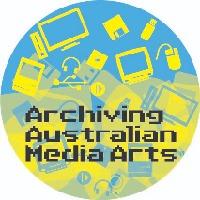Cynde Moya is a Postdoctoral Fellow at Centre for Transformative Media Technologies at Swinburne University of Technology
I’m working on two ARC-funded projects out of the Centre for Transformative Media Technologies at Swinburne University of Technology in Melbourne, Australia. These are Archiving Australian Media Arts: Towards a Method and National Collection (AAMA); and Play It Again: Preserving Australian Videogame History of the 1990s (PIA2).
Both projects are a progression of CI Melanie Swalwell’s career-spanning endeavor to call attention to and preserve these at-risk digital heritage materials. Swalwell has a talent in bringing diverse institutions, roles, and people together to work on common goals.
These projects are end-to-end: choosing materials to preserve, digitizing the obsolete carriers, testing the digitized objects in emulators/Emulation-as-a-Service, checking fidelity of the emulated works with renderings on real computers, storing the digitized works with appropriate descriptive and technical metadata, and providing these emulated works to archivists and curators to store and use in exhibitions.
As such, they require a collaboration among roles – curators, archivists, metadata specialists, digitization specialists, PhD students, the other Chief Investigators. Each member needs more training about the work of the other roles, such that a proper distributed workflow can be built. This is a complex strategy.
Fortunately, Melanie has been steadily working on preserving Australian videogames and media arts for many years. She saw to the placement of important media arts collections held by arts groups (dLux Media Arts, Experimenta Media Arts, the Australian Network for Art and Technology, Griffith Artworks) into museums and archives (Australian Centre for the Moving Image, Art Gallery of New South Wales, State Library of South Australia). The team, including CI Angela Ndalianis, CI Helen Stuckey and CI Denise de Vries, have built relationship with videogame creators to preserve their games and other materials and collect interviews. Now we are working with those responsible at the different collecting institutions to preserve and provide access to these collections.
I live in Seattle, USA. As soon as my visa to Australia came through, Melanie got me plane tickets and I found myself frantically packing for a flight that evening. As I was readying to leave for the airport, Melanie calls me – the Prime Minister, due to COVID, has closed the borders as of midnight Friday, and my flight was scheduled to land at 8AM Saturday. I was not going to Australia.
My role in the project is to test Emulation-as-a-Service and other emulators for their appropriateness and fidelity to render these complex, software-based digital objects. I found myself scrambling to create a work-from-home space in my tiny cabin, and from here to figure out what exactly I am supposed to be doing, and who the other players are. Much of the rest of the team is in Australia, a difficult time zone away. We found meeting at 4:30PM my time and 9:30AM Australia time works pretty well. Some advisors are on the East Coast of the USA, a 3 hour difference. Another set of team members, Klaus Reichert and his team at OpenSLX in Freiburg, Germany, who develop EaaS/EaaSI, adds another time zone into the mix.
Sharing modes were set up. A Dropbox to share digitized media. University-managed SWINstor is a cloud-based storage which has the benefit (maintain digital integrity) and drawback (multiple drafts have to be uploaded) of not being able to edit documents in place. Helen made Slack workspaces for each project. We have calls using Skype or Microsoft Teams or Zoom. The time distance often delays responses a day, so that waiting time must be filled with other useful activities. It can be frustrating, and it has wrought some havoc on the project timeline. But we keep pushing forward. The developing style of online conferences, like iPRES, to have each day be optimized for different time zones, is an unexpected benefit. As is having the recordings available for later viewing.
As of publishing this post, the AAMA team will have had three meetings to coordinate our activities. I need disk images to test and render. Others with access to digitization tools and media may need training in how exactly to scrape the bits off of 5.25 inch and 3.5 inch disks, as well as CDROMs and even cassette tapes. We need naming conventions, minimum metadata to be collected, a federated notion of how these digital images will be stored by each member.
Once digitized, project members will want instances of Emulation-as-a-Service / Emulation-as-a-Service Infrastructure so they can see the videogames and media arts in action. This next step will bring in technology experts, such as Australia’s Academic and Research Network (AARNet) and the IT departments of the collaborating institutions. Having a collaborative strategy to render complex digital objects in pre-configured emulated environments, and share those environments, is a big goal of this project.
COVID and travel bans across Australia and the globe has added complexities of time and space to our collaborations. However, we resiliently find new ways to work together to achieve our common goals.










































































































































